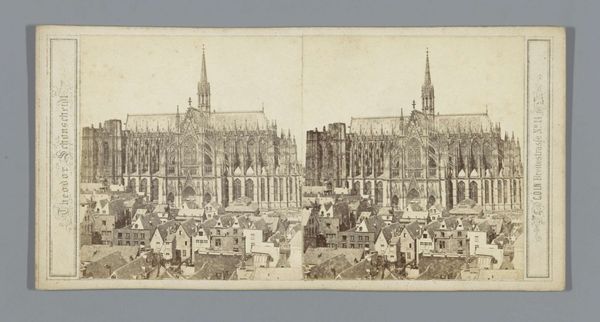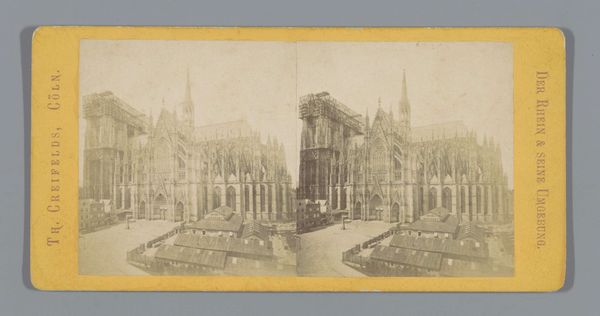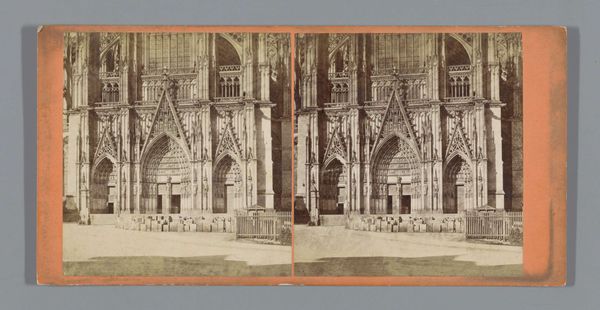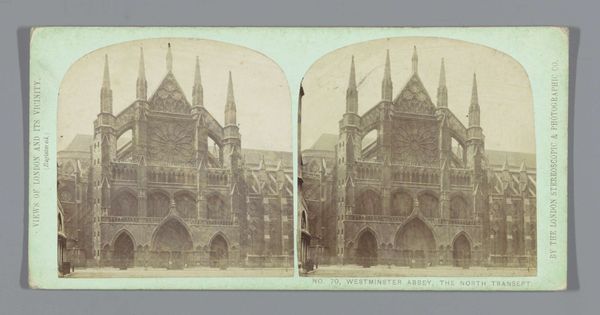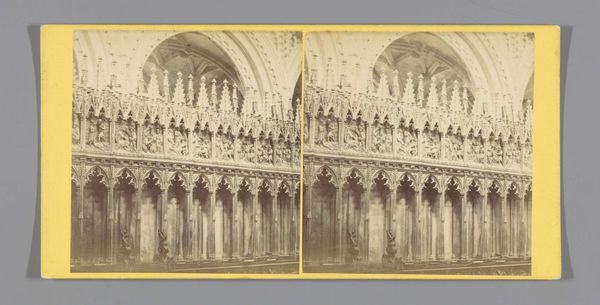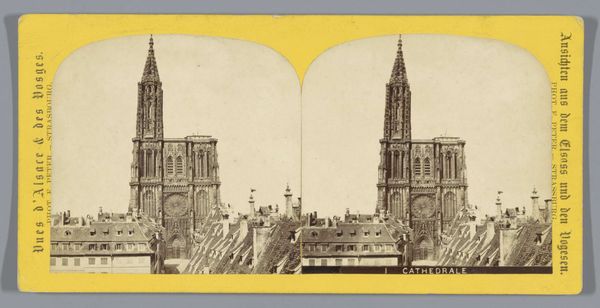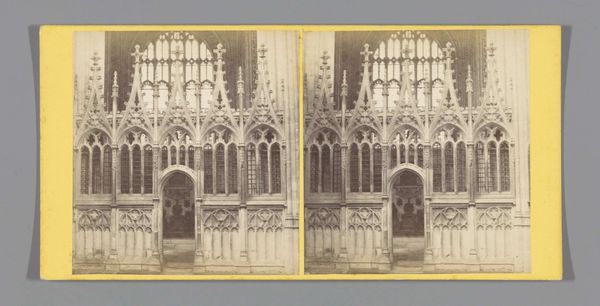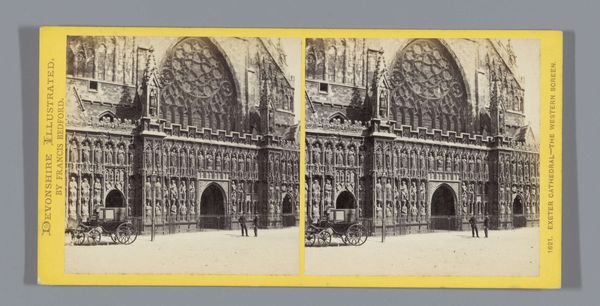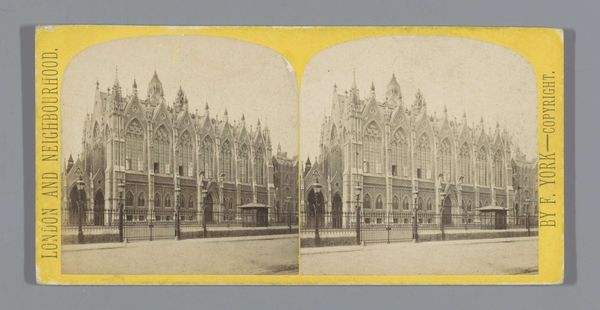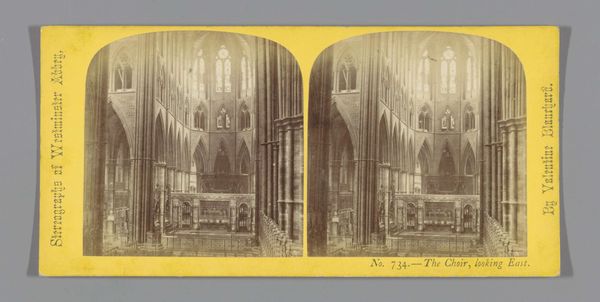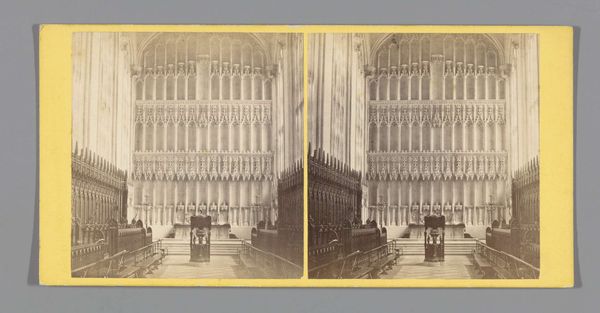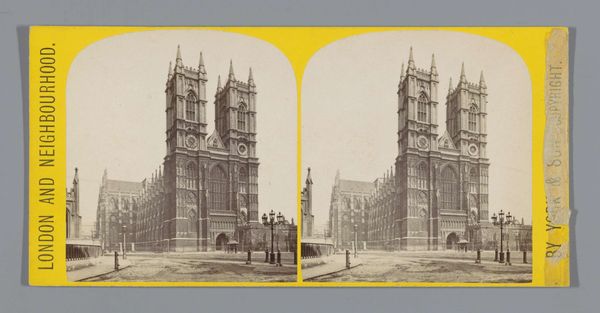
Dimensions: height 85 mm, width 170 mm
Copyright: Rijks Museum: Open Domain
This stereoscopic card showing the Cologne Cathedral was made by Anselm Schmitz, a photographer working in the mid-19th century. Made using the wet collodion process, it’s a fascinating example of early photographic technique. First, a glass plate would be coated with a chemical solution, then exposed while still wet, producing a negative image. The photograph’s sepia tone, its texture and clarity are all products of this delicate process. The two images presented side-by-side create a three-dimensional effect when viewed through a stereoscope, offering viewers a heightened sense of realism. Photographs such as these offer valuable insight into the social and cultural context of the time. Here, the inclusion of scaffolding around the cathedral reflects the realities of labor and construction of a society that still relies on hand-built architecture. This image asks us to consider photography as a craft, and to examine the layers of human skill, labor, and cultural meaning embedded in its making.
Comments
No comments
Be the first to comment and join the conversation on the ultimate creative platform.
